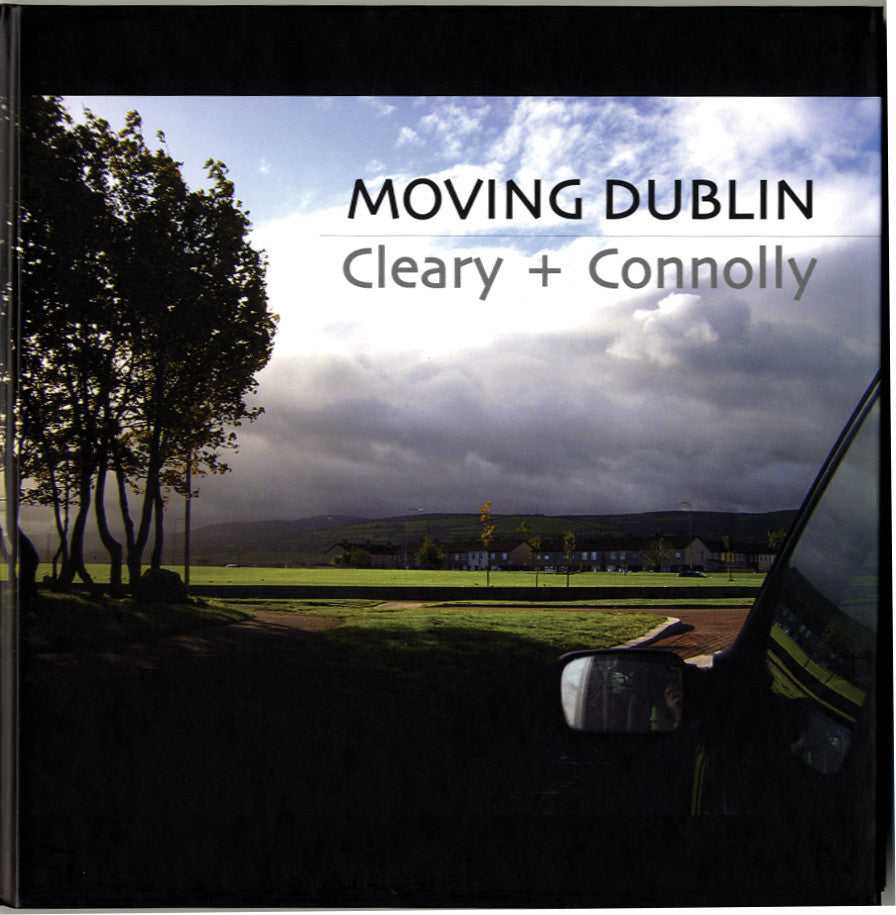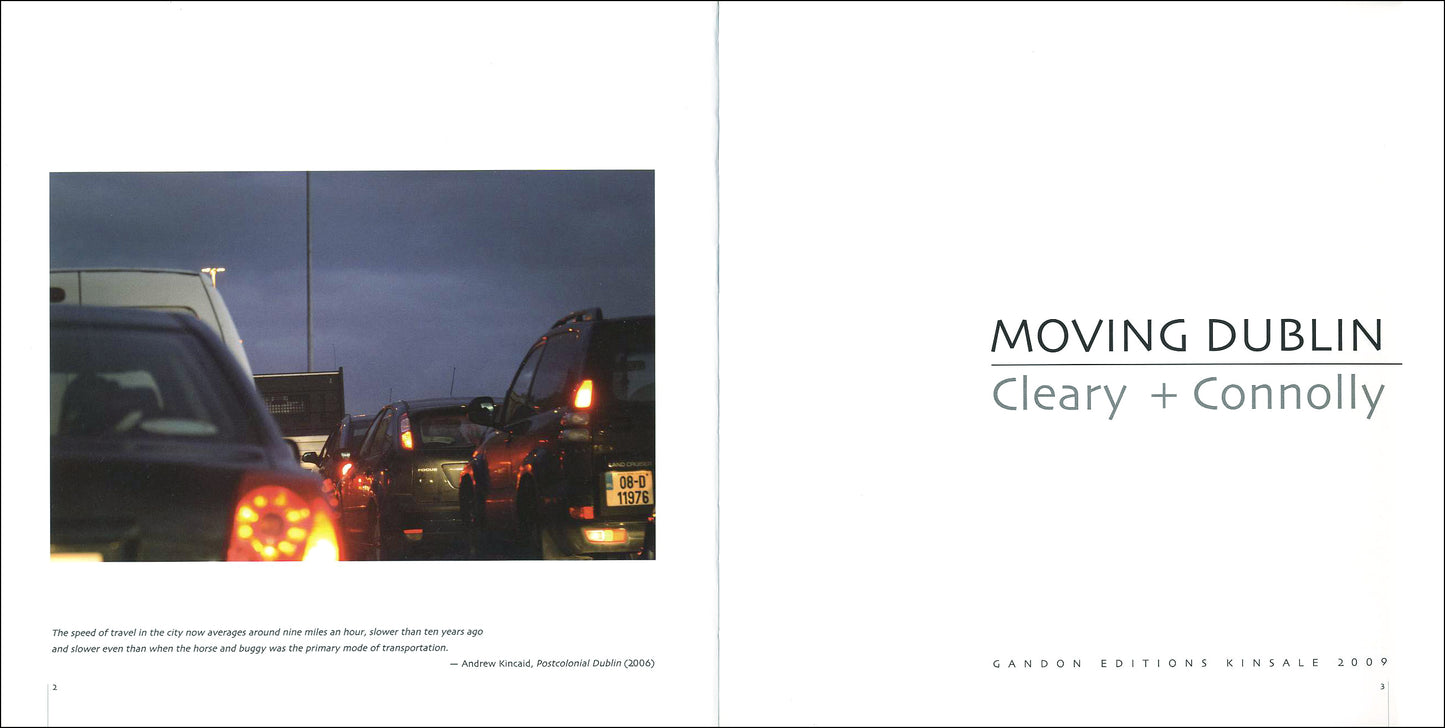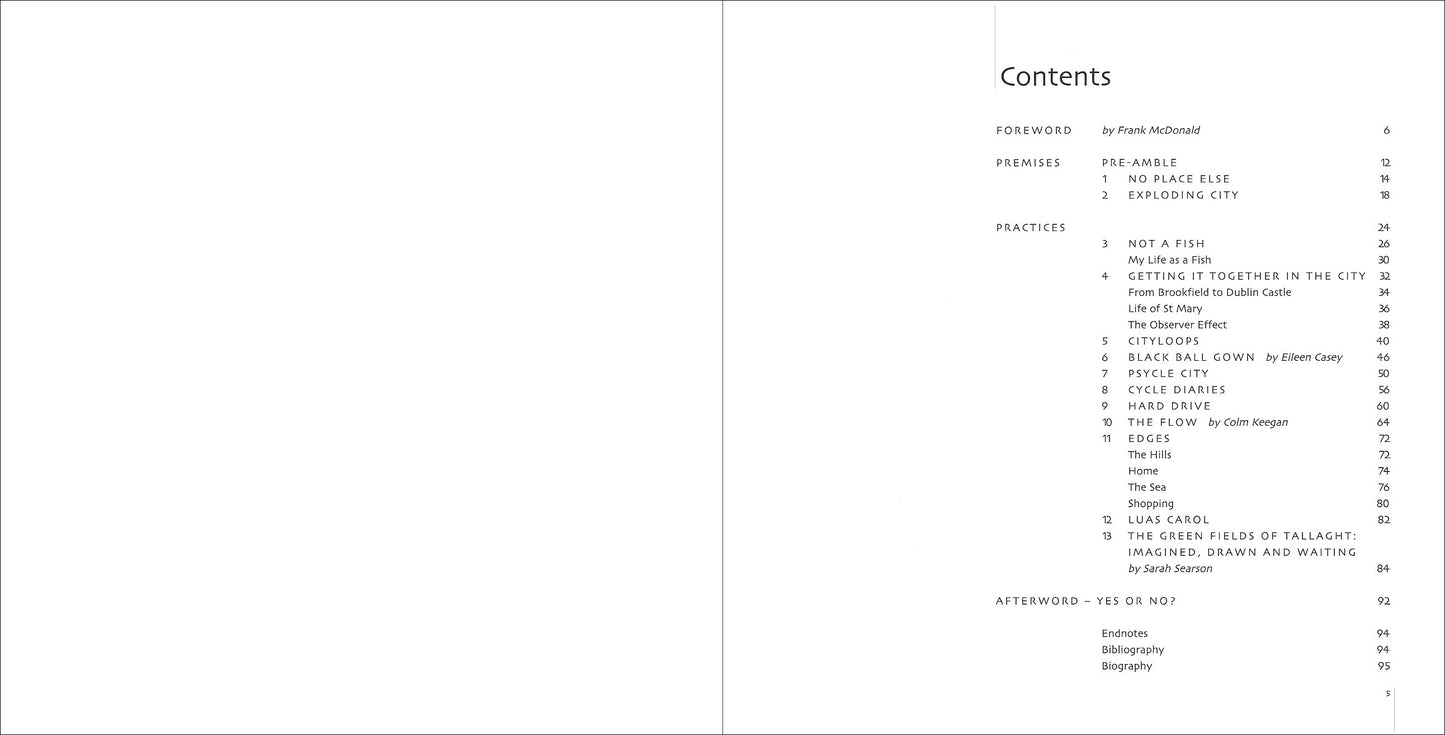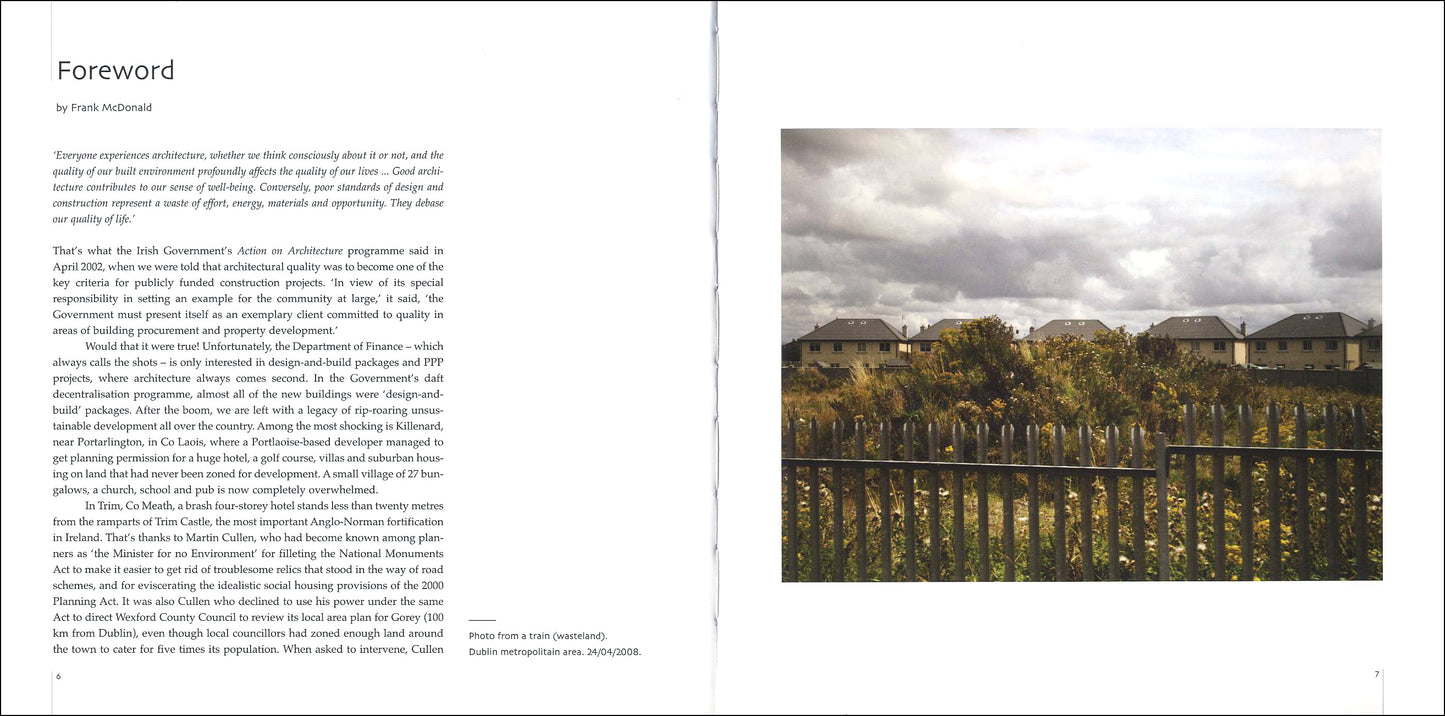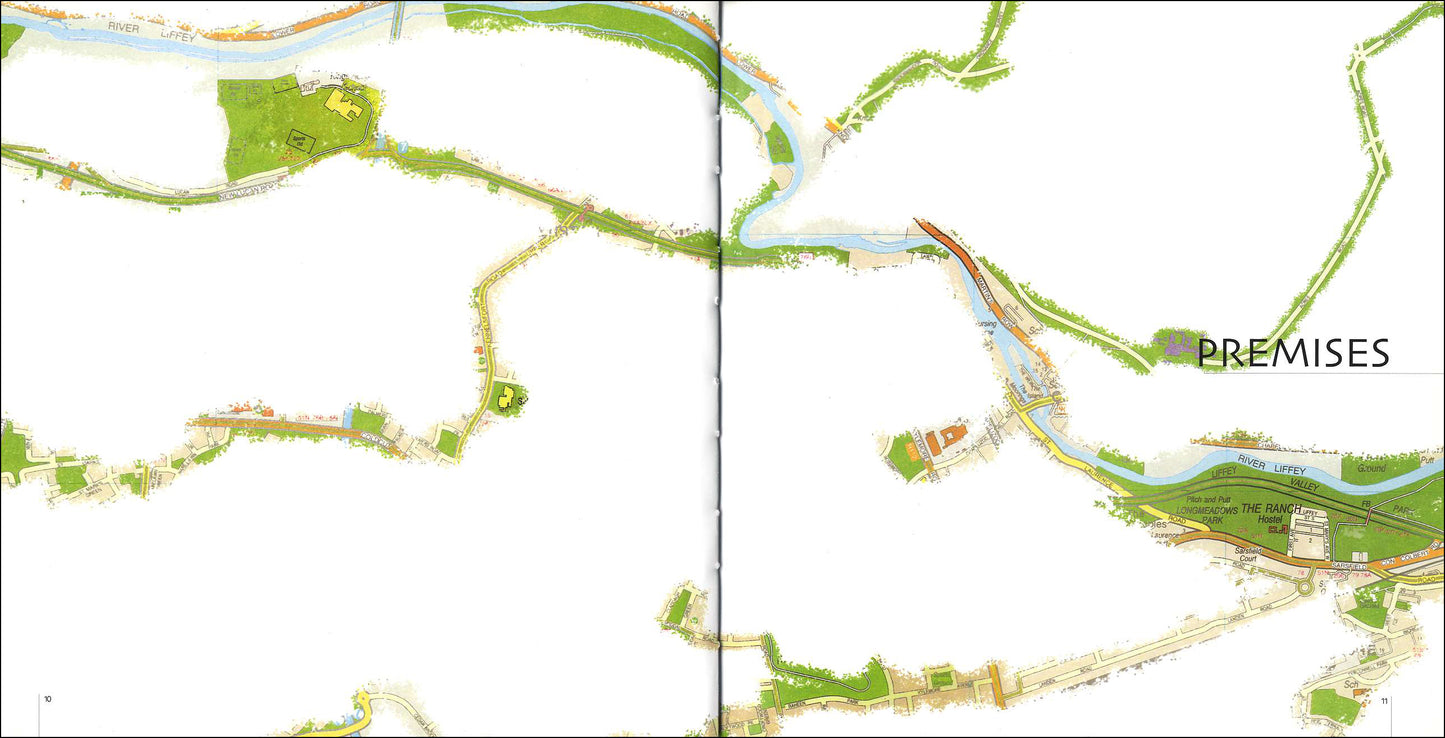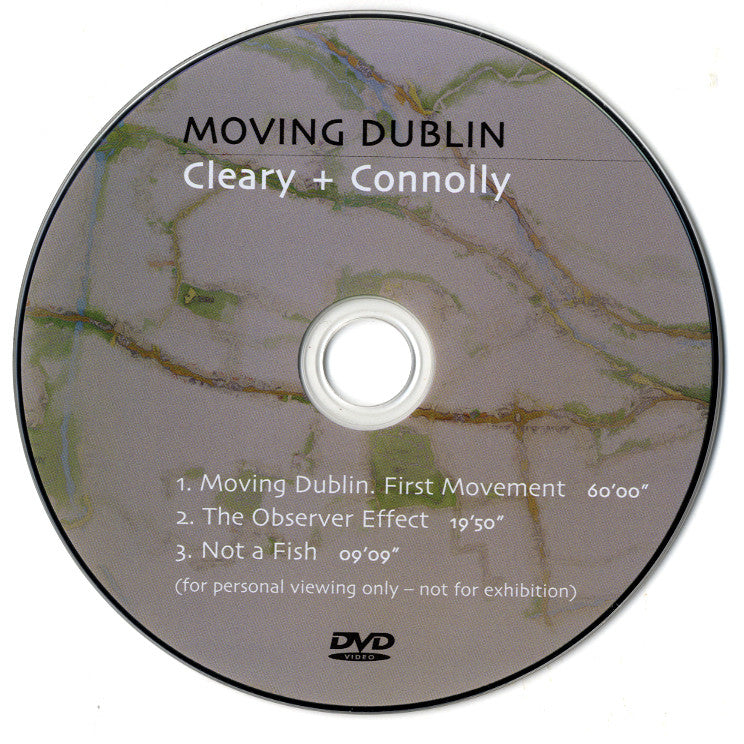Gandon
CLEARY + CONNOLLY — Moving Dublin
CLEARY + CONNOLLY — Moving Dublin
Couldn't load pickup availability
Share
by Anne Cleary + Denis Connolly
intro by Frank McDonald; essays by the artists, Eileen Casey, Colm Keegan, Sarah Searson, et al
ISBN 978 0948037 696 96pages (hardback) 22.5x24.5cm 44 col illus incl DVD
This book documents the Cityloops project, made when the artists were awarded a residency by South Dublin County Council. Throughout the two years that they worked on Cityloops, the artists moved around Dublin in every way possible – by car, taxi, bus, train, tram, bicycle and on foot – and in all seasons. They amassed a hoard of treasures – video footage, photographs, interviews, ambient sounds, stories, all little snippets of moving Dublin. These documents reflect as much the built reality of the urban space as they do a mental picture of the city that Lady Morgan once called her dear, dirty, Dublin.
This collection of journeys around Dublin reveals more about the city than any static description. Bicycles wander in and out of the narrative, and Connolly’s description of his courting of Cleary through repairing her bicycle pays homage to Flann O’Brien’s Third Policeman. Colm Keegan has contributed a wonderful description of kayaking along the River Liffey in the course of which he manages to explain both the questionable land rezonings in Clondalkin, and the truths that are learnt while paddling along the river. This work shows us new sides to Dublin and takes us out of our comfort zones of familiar neighbourhoods. It illustrates the city through the rear-view mirror on a rainy day ... I highly recommend it.
— Ciarán Cuffe, Irish Architect
_____
EXTRACTS
"Some years ago we wrote a project about urban walks and christened it Cityloops. The idea was based on ambling walks in and around the area where we live in Paris, all starting and finishing at our home on Boulevard Barbès. But making films about walks in Paris, where Guy Debord invented la dérive, was like bringing coals to Newcastle. Clearly, Paris didn’t need another film. Cityloops went back into the oven. Our work evolved to focus more and more on the everyday, and we continued to think about journeys in the city, not ambling, leisurely walks anymore, but gritty daily journeys, the familiar and repetitive trips that make up the lives of city-dwellers everywhere ... Could we consider everyday movement as the starting point of a contemporary urban science?
Consider the repetitive loops that make up the flux of the city, ranging in scale and rhythm from the incessant and anonymous flow of motorway traffic, through the familiar trundling of a local bus journey, right down to the micro scale of an early morning stroll around the block with the dog. Consider the city as a space defined by the paths of thousands of moving bodies, crossing each other, running parallel to each other, colliding, creating an infinity of possible encounters. This multiplicity of intersecting paths gives the place its form, carving roads, highways and public spaces, and filling the void in between with buildings. The impact of these journeys transforms lives, changes the face of the city and resonates on a planetary level. A million everyday journeys course through the veins of the city, giving it life or poisoning it. Cityloops was to finally re-emerge in 2006 ... it seemed natural that it would be about Dublin, with its terrifying growth rate, sprawling suburbs and chronic transportation problems. Yet, despite its rapid horizontal expansion, Dublin is still much the same place we left eighteen years ago – a real place, made of stone, brick, concrete, tarmac, grass, inhabited by real people, whose lives are the building blocks of the city."
— from the preamble by Cleary + Connolly
"Ireland is on the way to becoming a city-state, with Dublin dominating everywhere else. The capital has become an alarming example of the 21st-century phenomenon of the ‘meta-city’, with tentacles stretching out all over the province of Leinster via the spokes of a Dublin-centred motorway network, with pieces of the city popping up on the outskirts of towns and villages within a radius of 100 kilometres. The increasingly European-style city centre, with its new apartment buildings, smart shops and cappuccino bars, is surrounded by a vast, sprawling North American-style ‘edge city’. As a result, the nightmare scenario of community and even family life being eroded by long-distance commuting has become a grim reality for many Irish people. Now that the recession has arrived, perhaps we will have time to reflect on where we’ve come from, what we’ve done and what we could do to make Dublin a more environmentally sustainable city for the 21st century. We have time to think, like we did in the 1980s."
— from the foreword by Frank McDonald
|
CONTENTS FOREWORD by Frank McDonald 6 PREMISES: Pre-amble 12 1 – No place else PRACTICES 24 3 – Not a Fish: My Life as a Fish AFTERWORD – Yes or No? 92 Endnotes / Bibliography / Biography 95 DVD contents |
